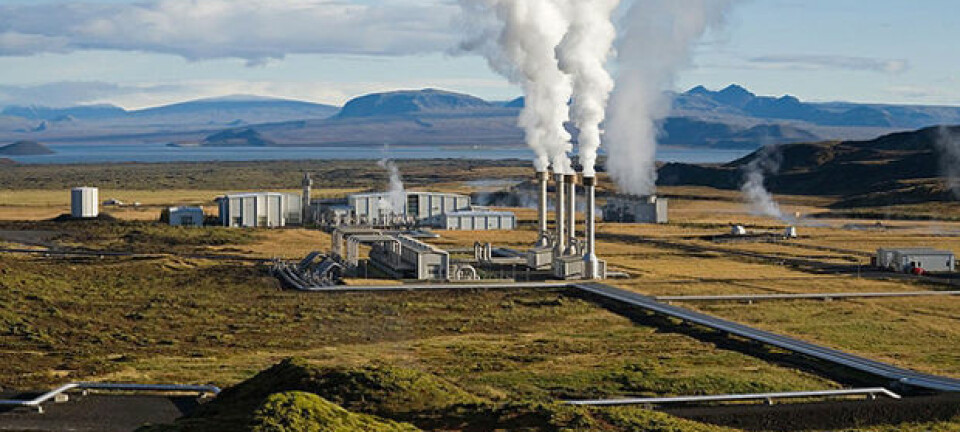
How to see through rock
It’s costly to drill deep into the ground for thermal energy. So you may want to know what’s going on down there. Mathematicians can help.
Denne artikkelen er over ti år gammel og kan inneholde utdatert informasjon.
A network of red and yellow triangles light up on the computer screen. A wave of blue washes over the triangles and down along curved lines.
“Each triangle represents an unknown quantity in the computer model,” says Tor Harald Sandve, a researcher at the Department of Mathematics at the University of Bergen.
Blue means cold and red means hot. Researchers can see the way cold water pours into fissures in the rock and gradually cools the rock around the cracks.
Warm water in the cracks
Sandve's models can be put to other uses too, for instance in prospecting for oil and gas, subterranean storage of carbon dioxide or simulations of how pollution spreads through the ground.
But his current focus is on thermal energy several kilometres below the surface. When you’ve spent a fortune on a deep drilling job, you want as good a return as possible.
“We simulate the flow of liquids in the fissures of the rock. Water flows into them and is heated by the warm rock,” explains Sandve.
This heat can originate in the Earth's molten core, as it does in Iceland and other volcanic hot spots. Or it can be the result of radioactive decay in the geological strata or bedrock, as it is in Norway.
Compromises
“The model can be used to determine how rapidly water should stream through the fissures. If it flows too rapidly it doesn’t have time to extract sufficient heat from the rock. If it runs too slowly, we don’t get enough hot water back up to run a power station,” says the researcher.
The ideal water flow is in turn dependent on the dimensions and numbers of fissures in the rock deep below the surface.
Many small cracks are better than a few large ones. This is because they provide a relatively larger surface area and more contact with the rock − thus heating the water better.
Another concern is that the heat in the rock can be depleted if it is taken out too fast. This isn’t a problem in volcanic areas where the heat comes from the sizzling core of the Earth. But radioactive decay requires more time to re-heat the rock. All of these factors can be mathematically simulated.
Simplifications
“The larger fissures can be simulated in pretty fair details," he says. "But we have to calculate an average for the smallest ones. The challenge lies in combining these two models so that we don’t get any information gaps in the transition between them.”
Another limitation is that the model operates with a cross section of the subterranean rock, in other words a two-dimensional area. Simulating in three dimensions would require too much computer power.
“We have to simplify the situation, but as long as the simplifications are good, you still ensure the essentials in your results,” says Sandve.
----------------------------------------------------------
Read this article in Norwegian at forskning.no
Translated by: Glenn Ostling































